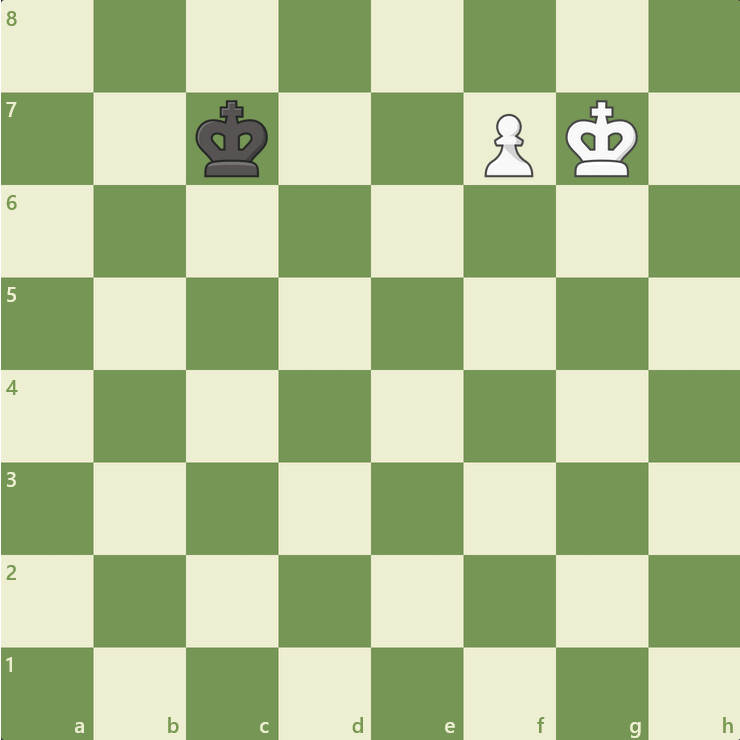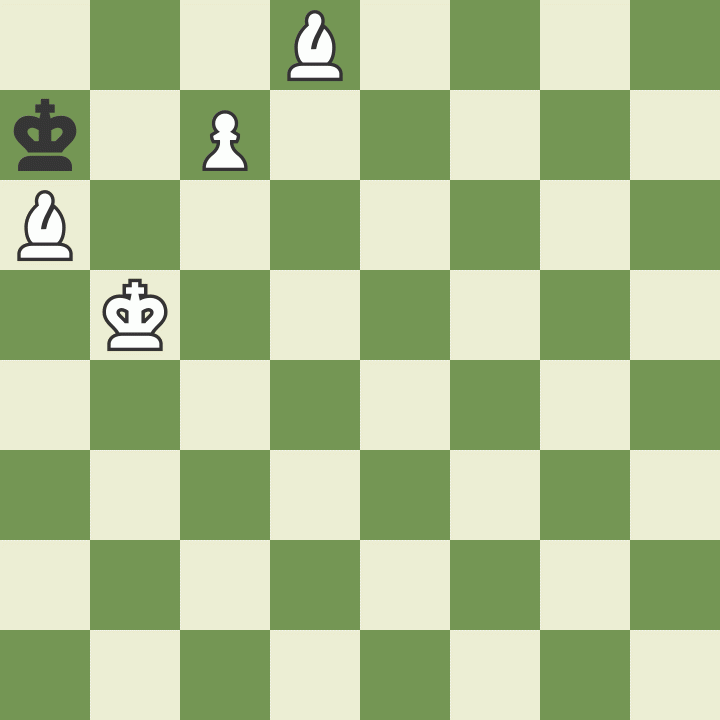
Pawn Promotion
Promoting a pawn is one of the main goals of chess during an endgame. The mere threat of promoting can be a significant advantage for the player who is familiar with this strategy. Here is all you need to know about pawn promotion.
- What Is A Pawn Promotion?
- What Is An Underpromotion?
- Notation For The Promotion
- Test Your Skills
- Conclusion
- Watch The Video Lesson
What Is A Pawn Promotion?
Pawn promotion occurs when a pawn reaches the farthest rank from its original square—the eighth rank for White and first rank for Black. When this happens, the player can replace the pawn for a queen, a rook, a bishop, or a knight. Most of the time, players promote a pawn to a queen, which is popularly known as "queening the pawn." After one player promotes a pawn, the other player has to move (unless they are checkmated, of course).

Nowadays, players can promote their pawns to any of the pieces mentioned above. There's also no limit regarding the number of active pieces of the same kind on the board. Because of that, technically, each player can have nine queens, 10 rooks, 10 bishops, and 10 knights, although, in reality, that is nearly impossible to happen.
A curious example of a game having more than one queen, though, happened in 2011 between GM David Anton Guijarro and IM Alejandro Franco Alonso. Each player had three queens on the board at one point!
What Is An Underpromotion?
An underpromotion happens when the player promoting a pawn decides to turn it into any piece other than a queen. Since the queen is the most powerful piece in chess, any promotion besides queening is considered to be "less powerful" and thus is known as underpromotion.
There are some cases, though, when promoting a pawn to a queen would be a terrible mistake. In most of these cases, such underpromotion takes place to avoid a stalemate, to deliver checkmate, or to gain a precious tempo.
Here is an excellent example of an underpromotion taking place to avoid a stalemate. In this diagram, you can see that promoting the pawn to a queen (or even a rook) would be an unfortunate blunder, since this would surround Black's king, leaving no legal moves and ending the game in a draw.

This game, played by GM Anatoly Karpov against GM Jan Timman in 1986, illustrates the concept of underpromoting to gain a tempo and avoid a draw. Notice that if Karpov had promoted to a piece other than a knight, Timman would have the opportunity to create a perpetual check pattern with his queen, forcing a tie.
Notation For The Promotion
The official FIDE way to indicate a pawn promotion is the notation for the pawn move with the addition of the piece the pawn was promoted to at the end. If a pawn on the a-file promotes to a queen, the official FIDE notation would be a8Q. If a pawn on the f-file captures another piece on the e-file and promotes to a knight, fxe8N.
Note that, in some cases, the promotions can be recorded a little differently. An equal sign or parentheses—a8=Q or a8(Q), respectively—are also used to indicate a promotion. Neither of those formats is officially accepted by FIDE, though.
Test Your Skills
Now that you know everything about pawn promotion, it is time for you to test your skills!
Let's try another promotion! Take a look at this position. What would be the best move?
Take a look at this last puzzle. This one is tougher because it requires more in-depth calculation. White is a queen down. Is there any move combination you can make to checkmate Black and win the game?
Conclusion
Pawn promotions are big parts of an endgame, but they can also be used to create threats during a middlegame as well! You can't focus on how to promote only your own pawns, but you should also know how to avoid that your opponent does so. Are you ready to start practicing your pawn play? Then, head over to our Endgame Drills page and improve your game right now!
Watch the Video Lesson
Reading an article is a wonderful way to improve, but watching a video lesson can help you even more! Below you will find a video lesson about pawn promotion.







